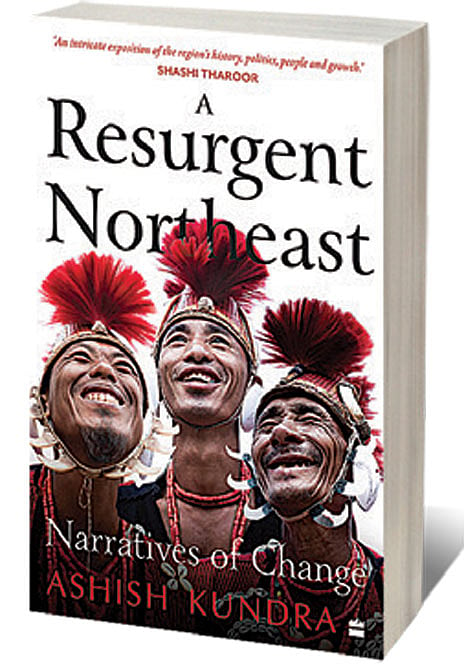Heartbeats of the Northeast

THE PARTITION OF 1947 inflicted great collateral damage on India’s Northeast. It became a cause of its “remoteness” as the creation of East Pakistan left it without access to the sea and only a narrow “chicken’s neck” connection with the rest of India. After that, a succession of Governments of India first made the conscious choice of leaving the region to its own devices and then followed it with a very heavy hand to contain security threats, internal and external. Seventy-five years later, things could not be more different. Geographically, far from being remote, the Northeast occupies the centre between East Asia and the rest of India, the primary economic growth engines of the 21st century. It is also the recipient of exceptional constructive attention from the government of India. The stage is set for the Northeast to shine.
Resurgent Northeast by Ashish Kundra is, therefore, a very timely book and a perfect primer for anyone interested in that region. It is published at a time when Prime Minister Narendra Modi has completed a record of over 40 visits to the region in the last five years, likely more than all of his predecessors combined. The attention isn’t merely symbolic. The region has received unprecedented investment in connectivity, the lack of which was the biggest handicap to economic development. The two sectors, which hold the maximum potential for the region, are tourism and horticulture. Neither can, or has, thrived because of poor and expensive connectivity. Indeed, it is common to see exotic and expensive flowers and fruits in the markets of Delhi and Mumbai imported from Thailand and other parts of East Asia when the very same high-value flowers and fruits are grown in the favourable climate of the Northeast. The story of tourism is similar with many more Indian and foreign tourists travelling to nearby countries rather than exploring the beauty of the Northeast.
2026 New Year Issue
Essays by Shashi Tharoor, Sumana Roy, Ram Madhav, Swapan Dasgupta, Carlo Pizzati, Manjari Chaturvedi, TCA Raghavan, Vinita Dawra Nangia, Rami Niranjan Desai, Shylashri Shankar, Roderick Matthews, Suvir Saran
Resurgent Northeast details the challenges and opportunities in these sectors and many more, including sports. The region has produced champions in boxing, football and hockey but can produce so many more if the right facilities are provided. A standout feature of the book is that it eschews the romanticism that sometimes accompanies writing on the region, which also fuels failed narratives of letting the region stay out of the mainline. Instead, it is realistic but not without a generous dose of heart and passion with a strong desire to bring the region and its diversity into the mainstream.
Perhaps the most interesting thing is that the author, Kundra, is a serving IAS officer. Apart from apathy from the Centre, even state governments in the region haven’t always delivered for the people. There are many factors that have led to this and the book has an insider’s view of the governance and political challenges. At least one reason has been the lack of passion and commitment from IAS officers who generally view postings in the region as punishment or a mandatory wait for something better in New Delhi. In that context, it is reassuring to note that there are officers such as Kundra who truly want to bring transformative change to the Northeast. This book, a quick read at just over 200 pages, should be required reading for all IAS officers assigned to North East cadres. It will persuade, motivate and, to paraphrase the book’s subtitle, change the narratives.
The fact is that the government still has a big role in creating the conditions for prosperity in the Northeast. The right circumstances need to be created for massive private sector participation by effective investment of resources in infrastructure and security. Ultimately, the flourishing of tourism or the blossoming of horticulture or the growth in sports needs private sector participation like in the rest of India. The first step to participation is to evince interest. Kundra’s book does a brilliant job of piquing interest in what could be India’s most exciting regional growth story yet.

